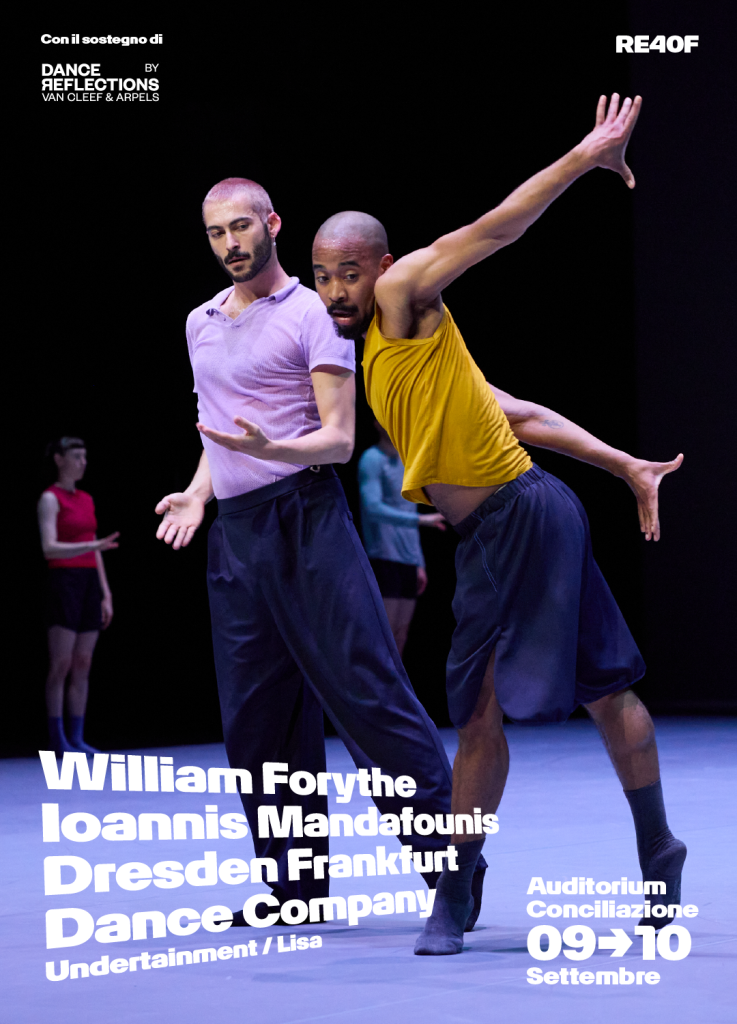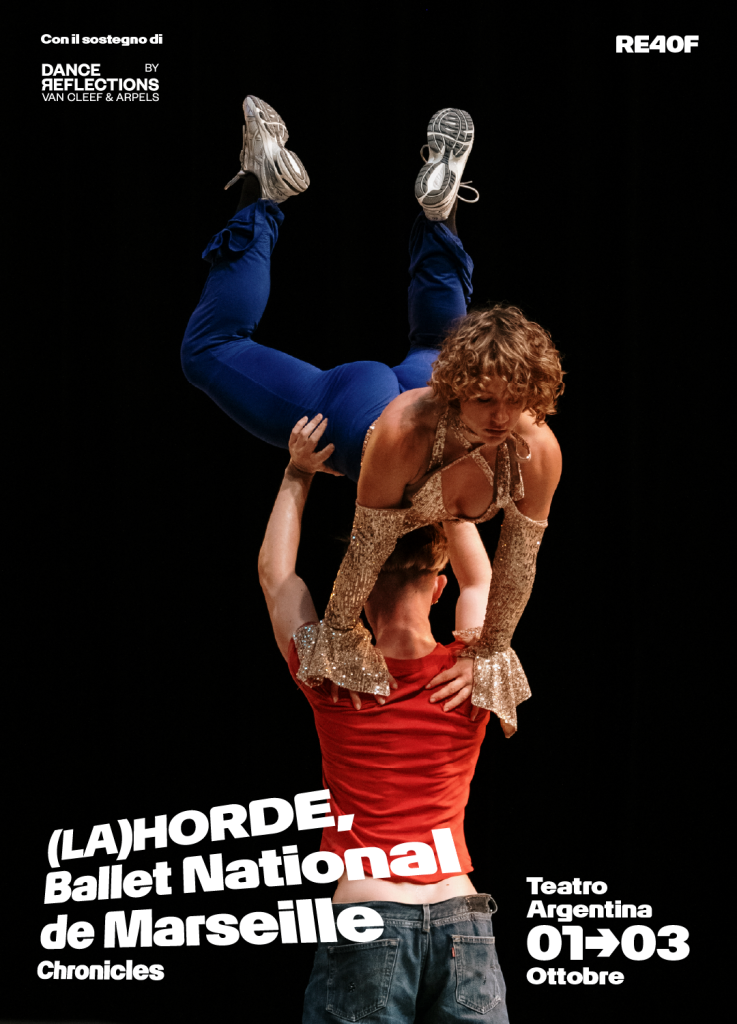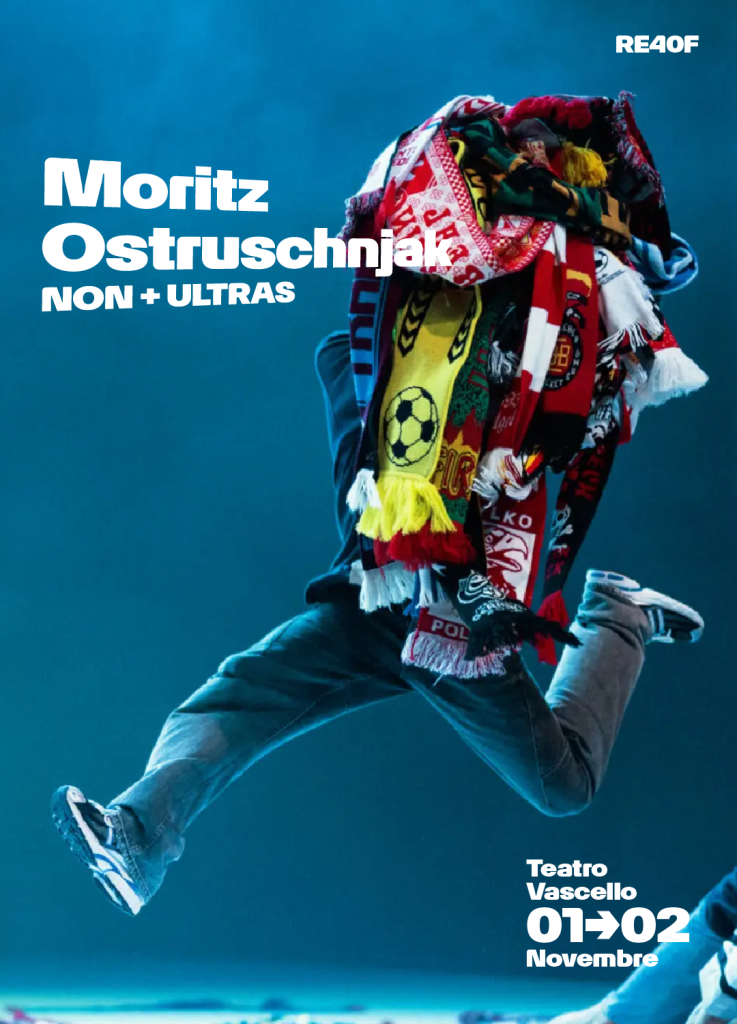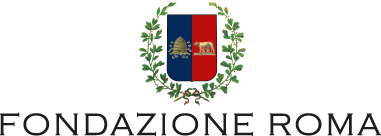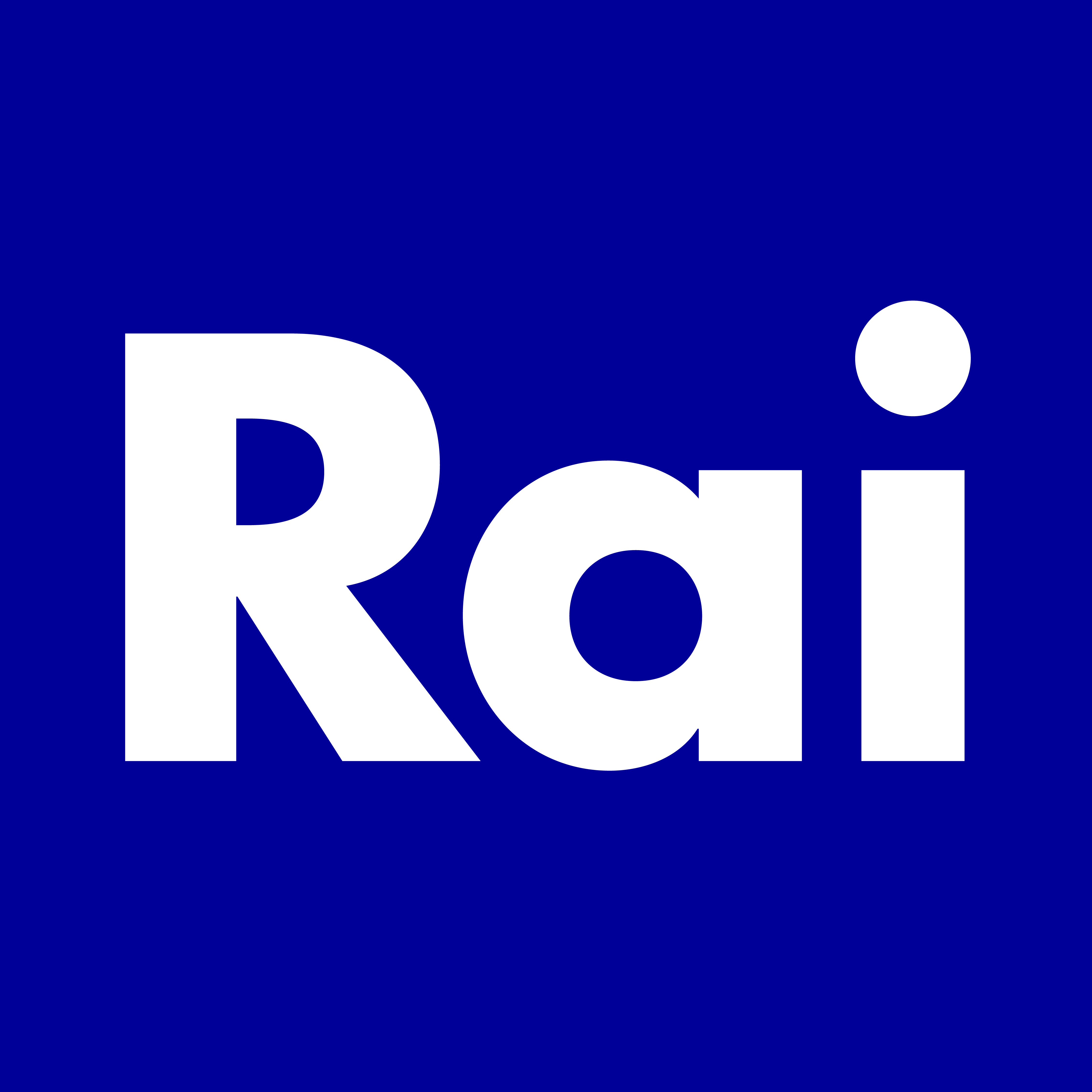For the English version scroll down
Scarica il programma / Download the program
Da quarant’anni Romaeuropa è il luogo dove la danza si reinventa. Un laboratorio vivo in cui il gesto e l’imprevisto aprono la scena a nuove forme d’espressione, visioni, linguaggi. Questa settimana torniamo a raccontare i grandi appuntamenti coreografici del festival, seguendo la traiettoria di quattro voci della scena internazionale – William Forsythe, Ioannis Mandafounis, (LA)HORDE e Moritz Ostruschnjak – che, pur nella loro diversità , condividono un’urgenza comune: ridefinire il corpo, il movimento, la scena.
Dresden Frankfurt Dance Company / William Forsythe / Ioannis Mandafounis – Undertainment / Lisa
Nel 1996 William Forsythe apriva l’undicesima edizione di Romaeuropa con il Ballet Frankfurt, la compagnia che aveva diretto dal 1984 e con cui aveva giĂ rivoluzionato la grammatica della danza. Partiva dal linguaggio del balletto classico solo per destrutturarlo, trasformando la coreografia in un sistema aperto: un campo dinamico dove geometrie, spazio e tempo si incontrano con l’improvvisazione. Non a caso Forsythe è riconosciuto tra i pionieri di una danza che interroga l’autorialitĂ , la disciplina, la forma. Nei suoi lavori, struttura e astrazione diventano materia mobile, attraversata da forze in mutazione. Dopo la chiusura del Ballet Frankfurt, nel 2005, il coreografo fonda la Forsythe Company – poi rinominata  Dresden Frankfurt Dance Company – proseguendo la sua ricerca all’interno di un nuovo assetto. Oggi, con la direzione del coreografo Ioannis Mandafounis, la compagnia torna a Romaeuropa all’Auditorium Conciliazione per una serata – nell’ambito del percorso costruito con Dance Reflections by Van Cleef & Arpels – che mette in dialogo due generazioni, due scritture, due modi di abitare la scena.
Undertainment, co-commissionata dal REF, è la nuova creazione di Forsythe: una struttura flessibile e rigorosa, alimentata dall’improvvisazione in cui il coreografo lascia emergere schemi imprevedibili e sorprendenti invitando gli interpreti ad esplorare, fino a ogni limite, il sistema di movimento da essi stessi creato. Lisa, firmata da Mandafounis – già interprete per Forsythe – eredita e reinventa le pratiche di improvvisazione nel metodo che ha contraddistinto il lavoro del coreografo: un esperimento di “coreografia dal vivo” in cui i danzatori prendono possesso spontaneamente del palcoscenico, accompagnati dalla musica di Gabriel Fauré e dai versi del poeta e saggista Ossip Mandelstam. Tra testo, musica e danza, la Dresden Frankfurt Dance Company offre una visione artistica che intreccia le sue radici storiche con le sperimentazioni contemporanee.
Ballet National de Marseille / (LA)HORDE – Chronicles
Un altro pezzo di storia: nel 1987 il Ballet National de Marseille, allora sotto la guida di Roland Petit, calcava il palco di Romaeuropa con l’eleganza di una delle grandi istituzioni della danza europea. Oggi la compagnia torna, ma con un’identità radicalmente trasformata. A dirigerla è il collettivo (LA)HORDE, tra le forze più esplosive della scena contemporanea. Il loro lavoro mescola gesti nati nelle subculture urbane e digitali – jumpstyle, hardstyle, voguing – in un linguaggio coreografico anarchico e collettivo. Il corpo è moltitudine, agitazione, comunità in movimento, sembra affermare la compagnia. E Chronicles, in scena al Teatro Argentina ancora con Dance Reflections by Van Cleef & Arpels, raccoglie estratti dai lavori che hanno segnato la loro traiettoria. Dalla furia catartica di Room with a View – ventotto danzatori sospesi tra rovine e utopie sonore firmate Rone – alla riflessione sull’estetica post-digitale di Age of Content, dove la danza incontra la cultura dei media e delle piattaforme. Una danza fisica, radicale che trasforma il palco in un inno generazionale.
Moritz Ostruschnjak – NON + ULTRAS
Estetica post-internet e post-digitale caratterizzano anche il lavoro del coreografo tedesco Moritz Ostruschnjak per la prima volta al Romaeuropa Festival con il suo NON + ULTRAS. Otto danzatori e cinquecento sciarpe da stadio costruiscono un affresco in movimento, dove il tifo si fa coreografia, la curva uno spazio performativo. Slogan, inni, meme, gesti virali si fondono in un flusso che riflette su identità collettive, ideologie, estetiche globali; un corpo attraversato da codici, immagini suoni e movimenti presi in prestito dal web, dal fitness, dal balletto, dallo sport. Con un linguaggio fatto di remix, ripetizione e saturazione, Ostruschnjak mette in scena un corpo sovraccarico, alienato, sempre performativo per una danza che prende in prestito le logiche di TikTok, della pubblicità , della performance art per interrogarne il senso. Tra culto e consumo, silenzio e rumore, massa e individuo: un’analisi tagliente della nostra realtà iperconnessa.
Body Revolutions. William Forsythe, (LA)HORDE, Moritz Ostruschnjak: Dance as Vision of the Future
For forty years, Romaeuropa has been the place where dance reinvents itself. A vibrant laboratory where gesture and the unexpected open the stage to new forms of expression, visions, and languages. This week, we return to recount the major choreographic highlights of the festival, following the trajectory of four voices from the international scene – William Forsythe, Ioannis Mandafounis, (LA)HORDE, and Moritz Ostruschnjak – who, despite their differences, share a common urgency: to redefine the body, movement, and the stage.
Dresden Frankfurt Dance Company / William Forsythe / Ioannis Mandafounis – Undertainment / Lisa
In 1996, William Forsythe opened the eleventh edition of Romaeuropa with Ballet Frankfurt, the company he had directed since 1984 and with which he had already revolutionized the grammar of dance. He began with the language of classical ballet only to deconstruct it, transforming choreography into an open system: a dynamic field where geometry, space, and time converge with improvisation. It’s no coincidence that Forsythe is recognized as a pioneer of a dance that questions authorship, discipline, and form. In his work, structure and abstraction become mobile matter, traversed by shifting forces.
After Ballet Frankfurt closed in 2005, the choreographer founded The Forsythe Company – later renamed the Dresden Frankfurt Dance Company – continuing his research within a new framework. Today, under the direction of choreographer Ioannis Mandafounis, the company returns to Romaeuropa at the Auditorium Conciliazione for an evening – part of the program curated with Dance Reflections by Van Cleef & Arpels – that sets two generations, two choreographic approaches, and two ways of inhabiting the stage in dialogue.
Undertainment, co-commissioned by REF, is Forsythe’s new creation: a flexible and rigorous structure fueled by improvisation, in which the choreographer allows unexpected and surprising patterns to emerge, inviting the performers to explore – to the limit – a movement system of their own making. Lisa, choreographed by Mandafounis – a former performer for Forsythe – inherits and reinvents improvisational practices within a method that defines his own work: an experiment in “live choreography,” where dancers spontaneously take command of the stage, accompanied by music by Gabriel Fauré and verses by poet and essayist Osip Mandelstam. Through text, music, and dance, the Dresden Frankfurt Dance Company offers an artistic vision that interweaves its historical roots with contemporary experimentation.
Ballet National de Marseille / (LA)HORDE – Chronicles
Another piece of history: in 1987, the Ballet National de Marseille, then under the direction of Roland Petit, graced the Romaeuropa stage with the elegance of one of Europe’s great dance institutions. Today, the company returns, but with a radically transformed identity. At its helm is the collective (LA)HORDE, one of the most explosive forces on the contemporary scene. Their work blends gestures born in urban and digital subcultures – jumpstyle, hardstyle, voguing – into an anarchic, collective choreographic language. The body is multitude, agitation, a moving community, the company seems to affirm.
Chronicles, presented at Teatro Argentina (again in collaboration with Dance Reflections by Van Cleef & Arpels), gathers excerpts from works that have defined their path. From the cathartic fury of Room with a View – twenty-eight dancers suspended between ruins and sonic utopias created by Rone – to the reflection on post-digital aesthetics in Age of Content, where dance meets media and platform culture. A physical, radical dance that turns the stage into a generational anthem.
Moritz Ostruschnjak – NON + ULTRAS
Post-internet and post-digital aesthetics also define the work of German choreographer Moritz Ostruschnjak, making his debut at Romaeuropa Festival with NON + ULTRAS. Eight dancers and five hundred football scarves build a living tableau, where fandom becomes choreography, and the stadium curve a performative space. Slogans, anthems, memes, viral gestures merge in a flow that reflects on collective identities, ideologies, and global aesthetics – a body infused with codes, images, sounds, and movements borrowed from the web, fitness, ballet, and sports.
With a language of remix, repetition, and saturation, Ostruschnjak stages an overloaded, alienated, perpetually performing body for a dance that borrows the logic of TikTok, advertising, and performance art to question their meaning. Between cult and consumption, silence and noise, crowd and individual: a sharp analysis of our hyperconnected reality.


